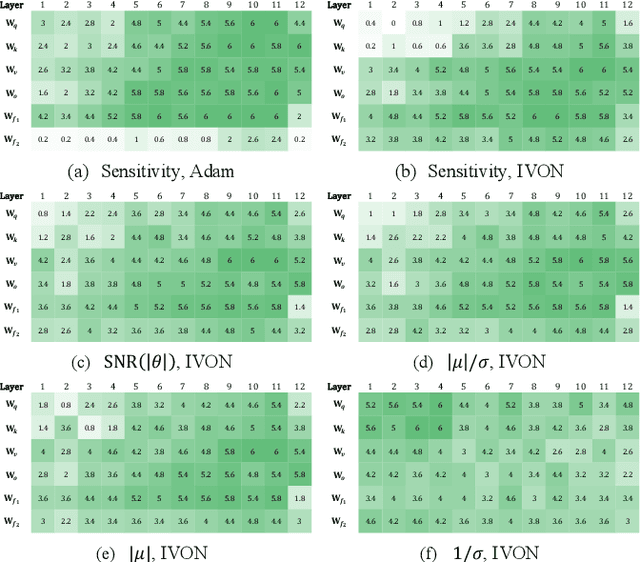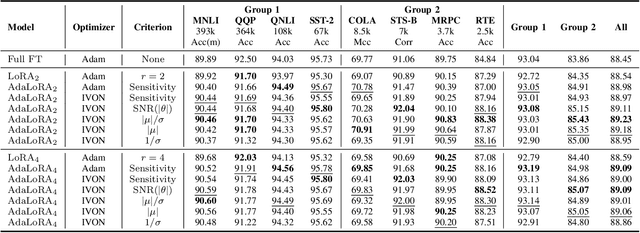Haolin Chen
ToolLibGen: Scalable Automatic Tool Creation and Aggregation for LLM Reasoning
Oct 09, 2025



Abstract:Large Language Models (LLMs) equipped with external tools have demonstrated enhanced performance on complex reasoning tasks. The widespread adoption of this tool-augmented reasoning is hindered by the scarcity of domain-specific tools. For instance, in domains such as physics question answering, suitable and specialized tools are often missing. Recent work has explored automating tool creation by extracting reusable functions from Chain-of-Thought (CoT) reasoning traces; however, these approaches face a critical scalability bottleneck. As the number of generated tools grows, storing them in an unstructured collection leads to significant retrieval challenges, including an expanding search space and ambiguity between function-related tools. To address this, we propose a systematic approach to automatically refactor an unstructured collection of tools into a structured tool library. Our system first generates discrete, task-specific tools and clusters them into semantically coherent topics. Within each cluster, we introduce a multi-agent framework to consolidate scattered functionalities: a code agent refactors code to extract shared logic and creates versatile, aggregated tools, while a reviewing agent ensures that these aggregated tools maintain the complete functional capabilities of the original set. This process transforms numerous question-specific tools into a smaller set of powerful, aggregated tools without loss of functionality. Experimental results demonstrate that our approach significantly improves tool retrieval accuracy and overall reasoning performance across multiple reasoning tasks. Furthermore, our method shows enhanced scalability compared with baselines as the number of question-specific increases.
LoCoBench: A Benchmark for Long-Context Large Language Models in Complex Software Engineering
Sep 11, 2025



Abstract:The emergence of long-context language models with context windows extending to millions of tokens has created new opportunities for sophisticated code understanding and software development evaluation. We propose LoCoBench, a comprehensive benchmark specifically designed to evaluate long-context LLMs in realistic, complex software development scenarios. Unlike existing code evaluation benchmarks that focus on single-function completion or short-context tasks, LoCoBench addresses the critical evaluation gap for long-context capabilities that require understanding entire codebases, reasoning across multiple files, and maintaining architectural consistency across large-scale software systems. Our benchmark provides 8,000 evaluation scenarios systematically generated across 10 programming languages, with context lengths spanning 10K to 1M tokens, a 100x variation that enables precise assessment of long-context performance degradation in realistic software development settings. LoCoBench introduces 8 task categories that capture essential long-context capabilities: architectural understanding, cross-file refactoring, multi-session development, bug investigation, feature implementation, code comprehension, integration testing, and security analysis. Through a 5-phase pipeline, we create diverse, high-quality scenarios that challenge LLMs to reason about complex codebases at unprecedented scale. We introduce a comprehensive evaluation framework with 17 metrics across 4 dimensions, including 8 new evaluation metrics, combined in a LoCoBench Score (LCBS). Our evaluation of state-of-the-art long-context models reveals substantial performance gaps, demonstrating that long-context understanding in complex software development represents a significant unsolved challenge that demands more attention. LoCoBench is released at: https://github.com/SalesforceAIResearch/LoCoBench.
UserBench: An Interactive Gym Environment for User-Centric Agents
Jul 29, 2025Abstract:Large Language Models (LLMs)-based agents have made impressive progress in reasoning and tool use, enabling them to solve complex tasks. However, their ability to proactively collaborate with users, especially when goals are vague, evolving, or indirectly expressed, remains underexplored. To address this gap, we introduce UserBench, a user-centric benchmark designed to evaluate agents in multi-turn, preference-driven interactions. UserBench features simulated users who start with underspecified goals and reveal preferences incrementally, requiring agents to proactively clarify intent and make grounded decisions with tools. Our evaluation of leading open- and closed-source LLMs reveals a significant disconnect between task completion and user alignment. For instance, models provide answers that fully align with all user intents only 20% of the time on average, and even the most advanced models uncover fewer than 30% of all user preferences through active interaction. These results highlight the challenges of building agents that are not just capable task executors, but true collaborative partners. UserBench offers an interactive environment to measure and advance this critical capability.
APIGen-MT: Agentic Pipeline for Multi-Turn Data Generation via Simulated Agent-Human Interplay
Apr 08, 2025Abstract:Training effective AI agents for multi-turn interactions requires high-quality data that captures realistic human-agent dynamics, yet such data is scarce and expensive to collect manually. We introduce APIGen-MT, a two-phase framework that generates verifiable and diverse multi-turn agent data. In the first phase, our agentic pipeline produces detailed task blueprints with ground-truth actions, leveraging a committee of LLM reviewers and iterative feedback loops. These blueprints are then transformed into complete interaction trajectories through simulated human-agent interplay. We train a family of models -- the xLAM-2-fc-r series with sizes ranging from 1B to 70B parameters. Our models outperform frontier models such as GPT-4o and Claude 3.5 on $\tau$-bench and BFCL benchmarks, with the smaller models surpassing their larger counterparts, particularly in multi-turn settings, while maintaining superior consistency across multiple trials. Comprehensive experiments demonstrate that our verified blueprint-to-details approach yields high-quality training data, enabling the development of more reliable, efficient, and capable agents. We open-source both the synthetic data collected and the trained xLAM-2-fc-r models to advance research in AI agents. Models are available on HuggingFace at https://huggingface.co/collections/Salesforce/xlam-2-67ef5be12949d8dcdae354c4 and project website is https://apigen-mt.github.io
ActionStudio: A Lightweight Framework for Data and Training of Large Action Models
Mar 31, 2025Abstract:Action models are essential for enabling autonomous agents to perform complex tasks. However, training large action models remains challenging due to the diversity of agent environments and the complexity of agentic data. Despite growing interest, existing infrastructure provides limited support for scalable, agent-specific fine-tuning. We present ActionStudio, a lightweight and extensible data and training framework designed for large action models. ActionStudio unifies heterogeneous agent trajectories through a standardized format, supports diverse training paradigms including LoRA, full fine-tuning, and distributed setups, and integrates robust preprocessing and verification tools. We validate its effectiveness across both public and realistic industry benchmarks, demonstrating strong performance and practical scalability. We open-sourced code and data at https://github.com/SalesforceAIResearch/xLAM to facilitate research in the community.
Language Models are Hidden Reasoners: Unlocking Latent Reasoning Capabilities via Self-Rewarding
Nov 06, 2024Abstract:Large language models (LLMs) have shown impressive capabilities, but still struggle with complex reasoning tasks requiring multiple steps. While prompt-based methods like Chain-of-Thought (CoT) can improve LLM reasoning at inference time, optimizing reasoning capabilities during training remains challenging. We introduce LaTent Reasoning Optimization (LaTRO), a principled framework that formulates reasoning as sampling from a latent distribution and optimizes it via variational approaches. LaTRO enables LLMs to concurrently improve both their reasoning process and ability to evaluate reasoning quality, without requiring external feedback or reward models. We validate LaTRO through experiments on GSM8K and ARC-Challenge datasets using multiple model architectures. On GSM8K, LaTRO improves zero-shot accuracy by an average of 12.5% over base models and 9.6% over supervised fine-tuning across Phi-3.5-mini, Mistral-7B, and Llama-3.1-8B. Our findings suggest that pre-trained LLMs possess latent reasoning capabilities that can be unlocked and enhanced through our proposed optimization approach in a self-improvement manner. The code of LaTRO is available at \url{https://github.com/SalesforceAIResearch/LaTRO}.
A Bayesian Interpretation of Adaptive Low-Rank Adaptation
Sep 16, 2024

Abstract:Motivated by the sensitivity-based importance score of the adaptive low-rank adaptation (AdaLoRA), we utilize more theoretically supported metrics, including the signal-to-noise ratio (SNR), along with the Improved Variational Online Newton (IVON) optimizer, for adaptive parameter budget allocation. The resulting Bayesian counterpart not only has matched or surpassed the performance of using the sensitivity-based importance metric but is also a faster alternative to AdaLoRA with Adam. Our theoretical analysis reveals a significant connection between the two metrics, providing a Bayesian perspective on the efficacy of sensitivity as an importance score. Furthermore, our findings suggest that the magnitude, rather than the variance, is the primary indicator of the importance of parameters.
xLAM: A Family of Large Action Models to Empower AI Agent Systems
Sep 05, 2024



Abstract:Autonomous agents powered by large language models (LLMs) have attracted significant research interest. However, the open-source community faces many challenges in developing specialized models for agent tasks, driven by the scarcity of high-quality agent datasets and the absence of standard protocols in this area. We introduce and publicly release xLAM, a series of large action models designed for AI agent tasks. The xLAM series includes five models with both dense and mixture-of-expert architectures, ranging from 1B to 8x22B parameters, trained using a scalable, flexible pipeline that unifies, augments, and synthesizes diverse datasets to enhance AI agents' generalizability and performance across varied environments. Our experimental results demonstrate that xLAM consistently delivers exceptional performance across multiple agent ability benchmarks, notably securing the 1st position on the Berkeley Function-Calling Leaderboard, outperforming GPT-4, Claude-3, and many other models in terms of tool use. By releasing the xLAM series, we aim to advance the performance of open-source LLMs for autonomous AI agents, potentially accelerating progress and democratizing access to high-performance models for agent tasks. Models are available at https://huggingface.co/collections/Salesforce/xlam-models-65f00e2a0a63bbcd1c2dade4
Bayesian Parameter-Efficient Fine-Tuning for Overcoming Catastrophic Forgetting
Feb 19, 2024Abstract:Although motivated by the adaptation of text-to-speech synthesis models, we argue that more generic parameter-efficient fine-tuning (PEFT) is an appropriate framework to do such adaptation. However, catastrophic forgetting remains an issue with PEFT, damaging the pre-trained model's inherent capabilities. We demonstrate that existing Bayesian learning techniques can be applied to PEFT to prevent catastrophic forgetting as long as the parameter shift of the fine-tuned layers can be calculated differentiably. In a principled series of experiments on language modeling and speech synthesis tasks, we utilize established Laplace approximations, including diagonal and Kronecker factored approaches, to regularize PEFT with the low-rank adaptation (LoRA) and compare their performance in pre-training knowledge preservation. Our results demonstrate that catastrophic forgetting can be overcome by our methods without degrading the fine-tuning performance, and using the Kronecker factored approximations produces a better preservation of the pre-training knowledge than the diagonal ones.
Vulnerability of Automatic Identity Recognition to Audio-Visual Deepfakes
Nov 29, 2023Abstract:The task of deepfakes detection is far from being solved by speech or vision researchers. Several publicly available databases of fake synthetic video and speech were built to aid the development of detection methods. However, existing databases typically focus on visual or voice modalities and provide no proof that their deepfakes can in fact impersonate any real person. In this paper, we present the first realistic audio-visual database of deepfakes SWAN-DF, where lips and speech are well synchronized and video have high visual and audio qualities. We took the publicly available SWAN dataset of real videos with different identities to create audio-visual deepfakes using several models from DeepFaceLab and blending techniques for face swapping and HiFiVC, DiffVC, YourTTS, and FreeVC models for voice conversion. From the publicly available speech dataset LibriTTS, we also created a separate database of only audio deepfakes LibriTTS-DF using several latest text to speech methods: YourTTS, Adaspeech, and TorToiSe. We demonstrate the vulnerability of a state of the art speaker recognition system, such as ECAPA-TDNN-based model from SpeechBrain, to the synthetic voices. Similarly, we tested face recognition system based on the MobileFaceNet architecture to several variants of our visual deepfakes. The vulnerability assessment show that by tuning the existing pretrained deepfake models to specific identities, one can successfully spoof the face and speaker recognition systems in more than 90% of the time and achieve a very realistic looking and sounding fake video of a given person.
 Add to Chrome
Add to Chrome Add to Firefox
Add to Firefox Add to Edge
Add to Edge